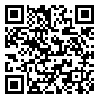Volume 12, Issue 45 (fall 2008)
jwss 2008, 12(45): 351-363 |
Back to browse issues page
Download citation:
BibTeX | RIS | EndNote | Medlars | ProCite | Reference Manager | RefWorks
Send citation to:



BibTeX | RIS | EndNote | Medlars | ProCite | Reference Manager | RefWorks
Send citation to:
Sahebzadeh N, Ebadi R, Khajehali J. Effects of Some Repellent Chemicals on the Honeybees ( Apis mellifera L.) at the Feeding Stations in the Field. jwss 2008; 12 (45) :351-363
URL: http://jstnar.iut.ac.ir/article-1-925-en.html
URL: http://jstnar.iut.ac.ir/article-1-925-en.html
Abstract: (26819 Views)
Due to injuries of pesticides to natural enemies of pests and pollinator insects, especially honeybees, during the flowering periods, it is essential to protect them. Application of chemical compounds along with the pesticides on the plants could repel the non-target insects from the sprayed areas for sometime and lessen the hazards of pesticides to them. In this study, ten repellent chemicals whose repellency effect was proven in the laboratory in previous studies were screened in the field. Among tested repellents including, Acetophenon, Methyl ethyl ketone, Methyl isobutyl ketone, Cyclohexanone, Acetyl acetone, Methylsalicylate, Propionic anhydride, Maleic anhydrate, 2- Ethylhexylamine, and Dibutylamine, it was revealed that amino group compounds including 2- Ethylhexylamine and Dibutylamine and esteric compound, Methylsalicilate had the highest repellency effect on the honeybees under the field conditions. Repellency effect of these compounds was greater at 15 pm than other sampling times. Repellency effects of different concentrations of these three compounds, when mixed with 0.5% concentration of fixative compounds, showed that the mixture of 2- Ethylhexylamine with Benzylbenzoate, Dibutylphthalate and Benzylalcohole with concentration of 0.17, 0.4 and 0.03 % respectively, the mixture of Dibutylamine at the concentration of 1% with Benzylbenzoate and Dibutylphthalate and at the concentration of 0.08% and higher with Benzylalcohole, and also mixture of Methylsalicilate at the concentration of 1.8 % and higher with Benzylalcohole, all have repellency effect of more than 70% under the field conditions.
| Rights and permissions | |
 |
This work is licensed under a Creative Commons Attribution-NonCommercial 4.0 International License. |





